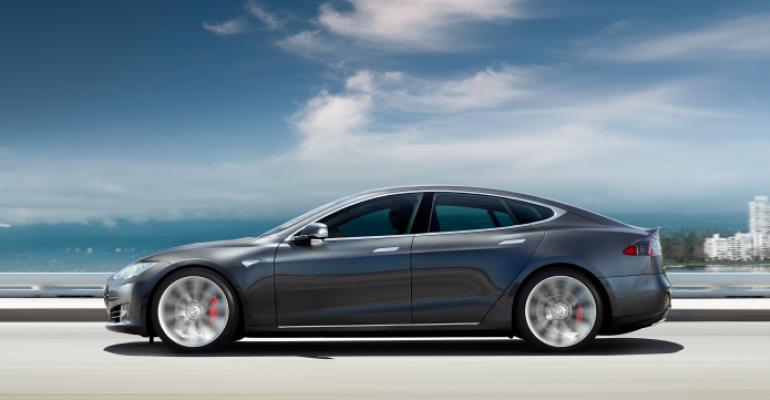Tesla’s Korean subsidiary opens its first major showroom in the country in a so-called shopping theme park recently opened in the affluent Hanam district of Seoul.
It is located about four miles (6.5 km) east of the popular mid-to-upscale Gangnam district, where Tesla is expected to open its second dealership Friday, March 17.
The Hanam store was scheduled to launch in December, but Tesla officials delayed the opening to fully satisfy all Korean procedural requirements for selling the all-electric vehicles.
The Ministry of Land, Infrastructure and Environment has fully certified both the Model S90D and the Model X CUV for sale in Korea, but one severe speed bump remains: Tesla has not been able to persuade the Ministry of the Environment to reconsider the uniqueness of its larger, longer-range EVs and the charging requirements for their high-capacity batteries.
At present, the ministry bars Tesla buyers from qualifying for eco-friendly-vehicle discounts of up to 22 million won ($19,000). In the case of the S90D, this would slash its base price to 99 million won ($87,000).
Despite the lack of subsidies, Korean consumers do not seem to mind the hefty sticker prices. Tesla officials are saying off the record they have received orders for 1,000 S90D and Model X units since the automaker began accepting online orders in August.
Tesla also says it is receiving more requests for demonstration test drives in Korea than in any other country.
The ministry instead is promoting purchases of smaller EVs such as those produced by Hyundai, Kia and other local automakers. It will provide the subsidy only to those models which can be recharged on 7-kW/h home chargers within 10 hours. A full recharge of a Model S on such low-capacity devices can take up to 13 hours, disqualifying it from receiving the government subsidy.
Consumers have complained Tesla is being unfairly treated because the S90D and Model X both can be recharged in less than 10 hours on higher-capacity level-2 chargers.
Shinsegai, Tesla’s local marketing partner, is installing five high-capacity chargers in Seoul and has installed 100 lower-capacity “destination chargers” at its E-Mart properties throughout Korea. Additionally, Tesla EVs are compatible with the 700 charging stations Korea Electric Power is installing around the country.
At the Hanam store opening, Nicolas Villeger, Tesla vice president-Southeast Asia, told reporters he was disappointed negotiations with environment ministry officials that began last summer have not resulted in the granting of EV purchase subsidies.
Also on hand for the grand opening was Shinsegae Group Vice Chairman Chung Yongjin, the first Tesla owner in Korea. His experience may not be a good harbinger for Tesla’s future in the South Korean market.
Chung bought an S Model in the U.S. in 2013 and exported it to Korea. However, he soon sold the vehicle for two reasons – the lack of charging stations and the intense public attention the vehicle received wherever he drove it.
At the grand opening, Chung reaffirms Shinsegai’s plan to open five high-capacity recharge stations in Seoul, as well as quick-recharge stations at most of its E-Mart and Chosun Hotel chain locations. Shinsegae also owns the Starbucks franchise in Korea and will place recharge stations near them where feasible.





